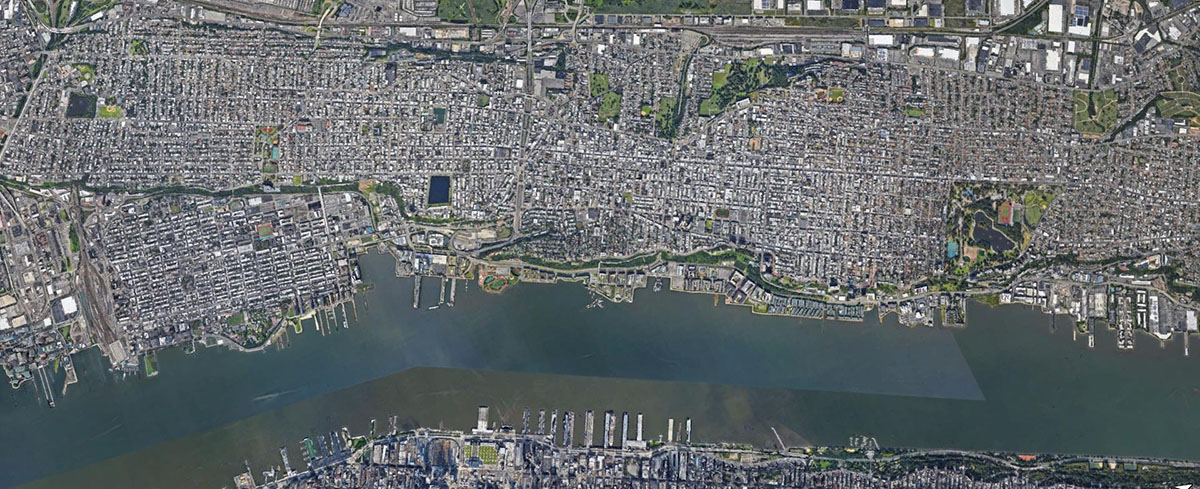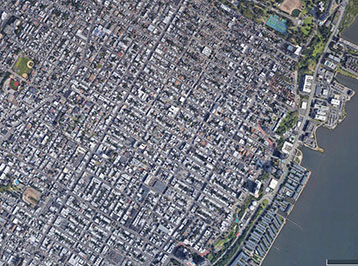The 2020 U.S. Census provides up-to-date numbers for our region.

Hoboken, West New York, Guttenberg and Union City are the top-ranked cities in the nation when in comes to population density.
FBW | September 7, 2021
For most of the last century, Hoboken’s population steadily declined from a high of 70,324 in 1910. By 1960, the number of residents dropped to 48,441. The town’s housing stock was visibly deteriorating. The maritime industries that once thrived at Hoboken’s waterfront and were a primary source of employment and tax revenue to the City had begun to leave for more modern facilities such as Port Newark-Elizabeth. Tenement buildings in Hoboken were crowded with many poor and working-class families.
In the 1970s, people from out of town, attracted to Hoboken’s turn-of-the-century architecture and neighborhood ambiance, began buying brownstones that were available at bargain prices. The City of Hoboken stepped up its building code-enforcement program. The City made three-percent loans available to homeowners to make improvements to their properties.
In subsequent years, Hoboken’s real estate market steadily heated up. From a low of 33,392 in 1990, the population shot up to 60,419 by 2020. Today, real estate developers are claiming and building high-density residential projects on the last available parcels, thus accounting for Hoboken’s rapid population growth despite the reduced numbers of people per dwelling unit.
Hudson is the most densely populated county in New Jersey, which is the most densely populated state in the country. Hudson County also contains the four most densely populated cities in the nation: Guttenberg, Union City, West New York and Hoboken. According to the 2020 U.S. Census, Hoboken has 47,202 people per square mile, in fourth place behind the three other Hudson municipalities.
Hudson County continues to be the most diverse in New Jersey. Its population is 43 percent Latino, 29 percent non Hispanic white, 16 percent Asian and 15 percent Black. In the past five years, 43 percent of Hudson County residents were foreign born.
In the 1960s, North Hudson became the destination for thousands of Cuban refugees. In the decades that followed, a diverse Latin American population developed. The 2020 Census shows West New York at 78 percent Latino, Union City at 76 percent, North Bergen at 68 percent and Guttenberg at 66 percent. The many North Hudson restaurants reflect the countries represented: Cuban, Mexican, Columbian, Brazilian, Peruvian, etc.
Hoboken, more than any other Hudson County municipality, has changed most dramatically. In 1980, Hoboken’s Latino population comprised 40 percent of the city’s residents. Today, the number is 16 percent. The influx of many new, more affluent residents has ended the long reign of Hudson County politics. Today, just two members of the nine-member Hoboken City Council were born and raised in Hoboken.
Most Hudson County municipalities exceed the national average in people living below the poverty line. The rate in West New York and Union City is 20 percent, for Guttenberg 14 percent.
Jersey City is by far the largest Hudson County municipality and the second largest in New Jersey behind Newark. It’s population of 292,449 comprises 44 percent of Hudson County’s total. The population is divided between Black (23%), Latino (29%), Asian (25%) and nonhispanic white (22%). Jersey City has 17 percent of its residents living below the poverty line.
The fastest growing municipality in Hudson County was Weehawken. In the past decade the town’s population grew by 37 percent from 12,554 to 17,197. This is the result of the intense residential development of its 142-acre waterfront.
Related Links
30 Years of Advocacy on the Hoboken Waterfront
The Central Park effect: value added from public parks
Latest Lincoln Harbor project, approved by Weehawken Planning Board, disregards good planning principles
The urban design principles that make for successful waterfronts
Hoboken’s original plan and first parks established in 1804

